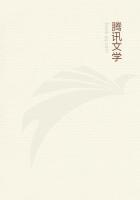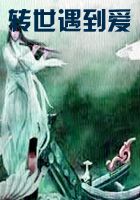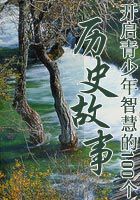On consulting their books of reference, the colonists found that Saturn completes his revolution round the sun in a period of 29 years and 167 days, traveling at the rate of more than 21,000 miles an hour along an orbit measuring 5,490 millions of miles in length. His circumference is about 220,000 miles;his superficies, 144,000 millions of square miles; his volume, 143,846 millions of cubic miles. Saturn is 735 times larger than the earth, consequently he is smaller than Jupiter;in mass he is only 90 times greater than the earth, which gives him a density less than that of water.
He revolves on his axis in 10 hours 29 minutes, causing his own year to consist of 86,630 days; and his seasons, on account of the great inclination of his axis to the plane of his orbit, are each of the length of seven terrestrial years.
Although the light received from the sun is comparatively feeble, the nights upon Saturn must be splendid. Eight satellites--Mimas, Enceladus, Tethys, Dione, Rhea, Titan, Hyperion, and Japetus--accompany the planet; Mimas, the nearest to its primary, rotating on its axis in 221/2 hours, and revolving at a distance of only 120,800 miles, whilst Japetus, the most remote, occupies 79 days in its rotation, and revolves at a distance of 2,314,000 miles.
Another most important contribution to the magnificence of the nights upon Saturn is the triple ring with which, as a brilliant setting, the planet is encompassed. To an observer at the equator, this ring, which has been estimated by Sir William Herschel as scarcely 100miles in thickness, must have the appearance of a narrow band of light passing through the zenith 12,000 miles above his head.
As the observer, however, increases his latitude either north or south, the band will gradually widen out into three detached and concentric rings, of which the innermost, dark though transparent, is 9,625 miles in breadth; the intermediate one, which is brighter than the planet itself, being 17,605 miles broad; and the outer, of a dusky hue, being 8,660 miles broad.
Such, they read, is the general outline of this strange appendage, which revolves in its own plane in 10 hours 32 minutes.
Of what matter it is composed, and how it resists disintegration, is still an unsettled question; but it might almost seem that the Designer of the universe, in permitting its existence, had been willing to impart to His intelligent creatures the manner in which celestial bodies are evolved, and that this remarkable ring-system is a remnant of the nebula from which Saturn was himself developed, and which, from some unknown cause, has become solidified. If at any time it should disperse, it would either fall into fragments upon the surface of Saturn, or the fragments, mutually coalescing, would form additional satellites to circle round the planet in its path.
To any observer stationed on the planet, between the extremes of lat.
45 degrees on either side of the equator, these wonderful rings would present various strange phenomena. Sometimes they would appear as an illuminated arch, with the shadow of Saturn passing over it like the hour-hand over a dial; at other times they would be like a semi-aureole of light.
Very often, too, for periods of several years, daily eclipses of the sun must occur through the interposition of this triple ring.















